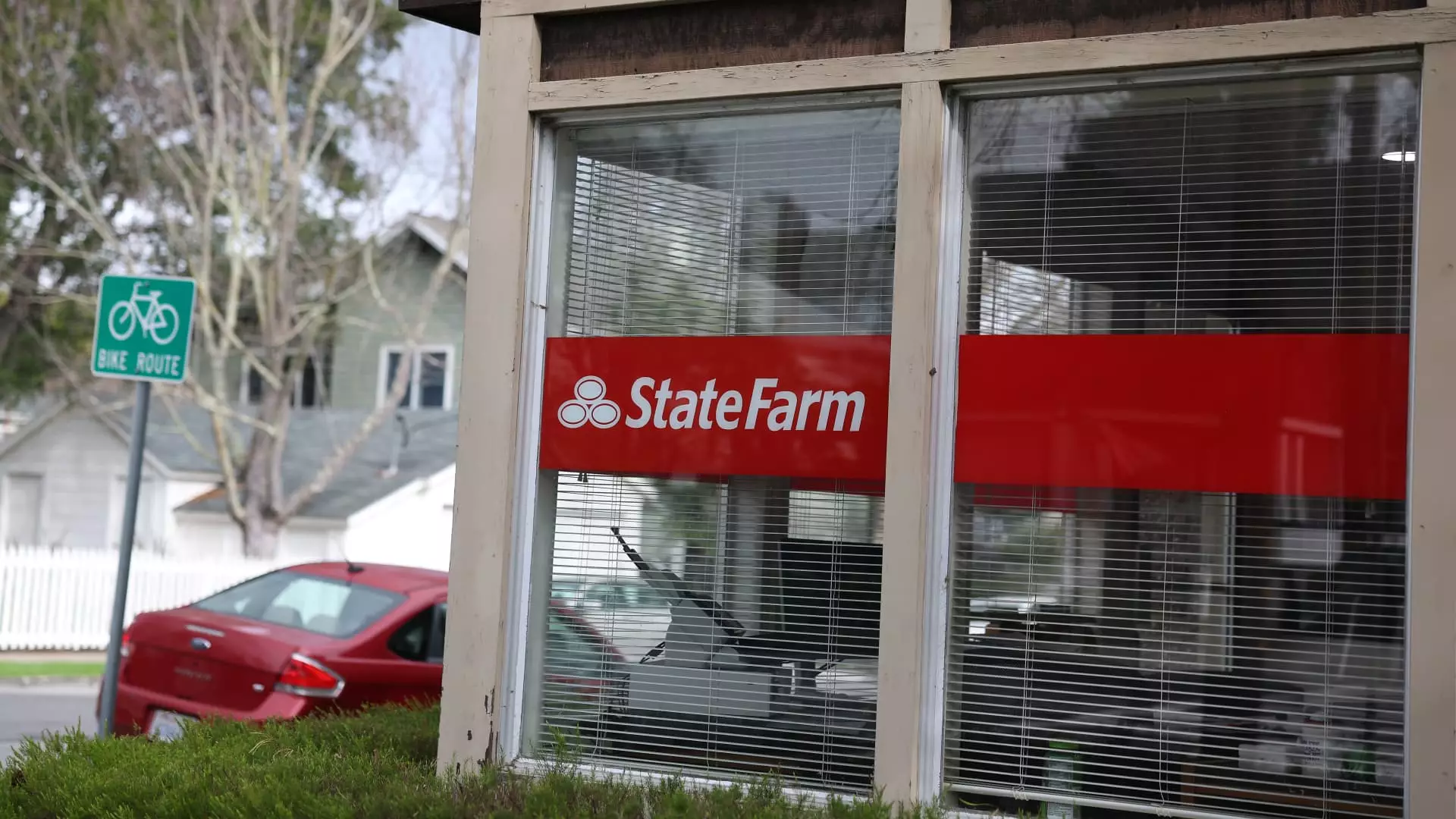In a landscape marred by catastrophic wildfires, State Farm General’s bid for a substantial rate hike in California is not just a financial maneuver; it represents a staggering disconnect between corporate greed and the stark realities faced by millions of homeowners. The insurer’s plight, heightened by the devastating Los Angeles wildfires, transcends mere economics—it unveils a floundering insurance system teetering on the brink of collapse. With losses soaring to unprecedented levels, this three-day hearing in Oakland highlights the desperation of a company seeking approval for an emergency rate increase amidst one of California’s worst natural disaster crises while simultaneously navigating public outcry for accountability.
State Farm’s Financial Quandary
State Farm General, which holds a significant 20% market share of California’s homeowners market, has painted a bleak picture of its financial health, likening its predicament to the Titanic—a chilling metaphor of impending ruin. The insurer claims it needs an influx of capital to avert further financial disaster, even as it announced plans for a staggering 38% increase on renter dwelling policies and a 15% hike for renters. The irony of such proposals is palpable, especially when contextualized against the backdrop of over $2.75 billion paid out in claims stemming from the wildfires. With claims denoting a colossal estimated loss of around $7.6 billion, policyholders are left questioning: is it possible that the company can justify such a steep increase when so many are still grappling with the aftermath of disaster?
The situation elucidates a deeper structural flaw. For years, the insurance industry in California has been wrestling with losses that far exceed premiums—a misalignment that seemingly went unaddressed until now. Insurers have taken to shrinking their operations, with State Farm making the significant decision to halt new homeowners insurance policies, thus hamstringing California residents in need of coverage. The cautionary tale here is alarming: when corporations like State Farm put profit margins above community welfare, they abandon their role as a safety net.
The Political Context: Under Pressure
The insurer’s appeal is further complicated by the regulatory framework within which it operates. California’s Insurance Commissioner, Ricardo Lara, has faced intense pressure regarding proposed rate increases. Although the Department of Insurance has indicated support for State Farm’s pleas, the looming threat of looming financial panic is pervasive. Consumers and advocacy groups, notably Consumer Watchdog, argue against the legitimacy of State Farm’s rationale—claiming that the company has failed to provide a compelling case for such rate increases. The inconsistency in their requests—from an initial 22% to a revised 17%—reveals an organization grappling with its own justification, rather than confidence in a strategy that serves both corporate interests and public welfare.
The fact that the insurer requires a $400 million safety net from its parent company only deepens skepticism. Are California’s homeowners becoming collateral damage in a corporate strategy focused solely on safeguarding profits rather than enhancing community resilience?
The Future: A System at Risk
As the hearing progresses, voices in economic and regulatory spheres highlight the deteriorating state of California’s insurance market. Economists warn that the current model is unsustainable, leaving the California FAIR Plan—the insurer of last resort—swamped as it accommodates those dropped by major carriers. Such strategies highlight systemic failures, as insurers contour their policies around crisis avoidance rather than meaningful consumer protection.
While State Farm argues that its proposed increases could stabilize its financial situation, the implications are profound for Californian homeowners already beleaguered by rising costs and natural disaster threats. Janet Ruiz from the Insurance Information Institute insists that the implementation of a “Sustainable Insurance Strategy” is crucial in addressing these systemic issues. But is a framework sufficient in addressing the root causes of an insurance crisis that disproportionately affects the most vulnerable citizens?
Consumer advocacy remains more critical than ever. With watchdog organizations like Consumer Watchdog emphasizing the need for stringent oversight in the face of corporate avarice, the power of collective resistance may be the only lifeboat for homeowners sinking in the rising waters of corporate mismanagement.
As State Farm continues to fight for rate increases under the banner of crisis, one thing is undeniably clear: the future of insurance in California hangs precariously in the balance, and the stakes are far too high to ignore.


Leave a Reply